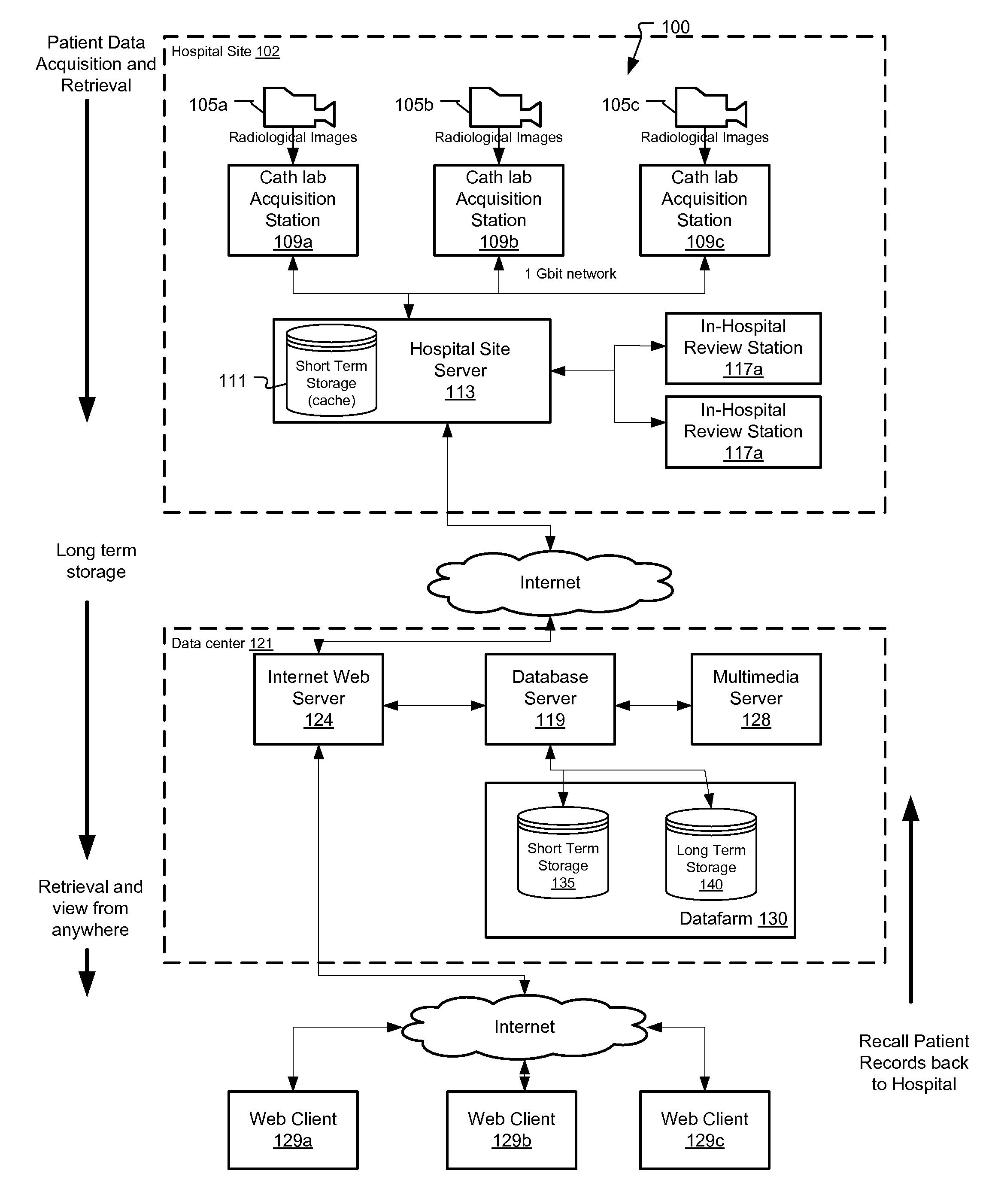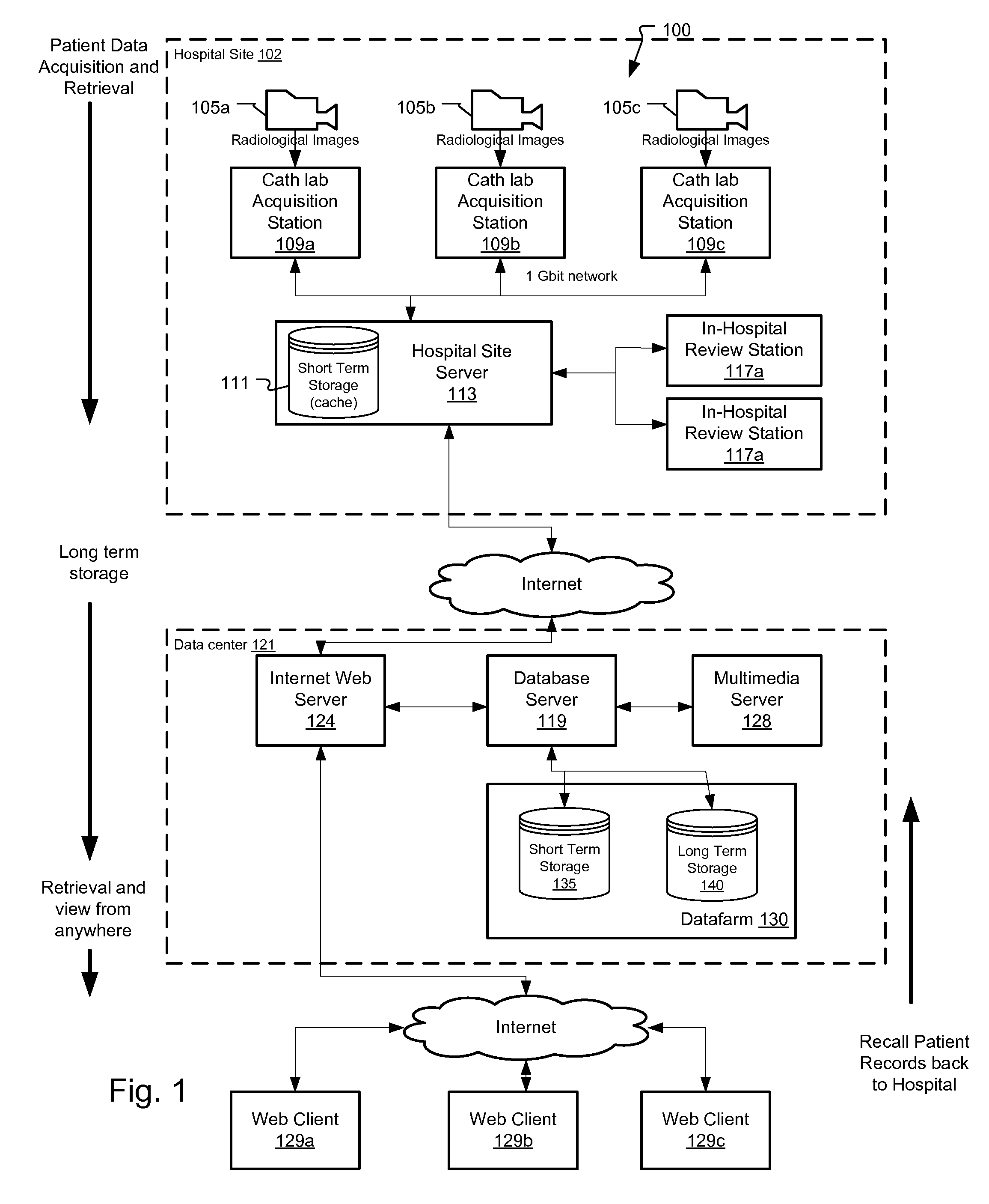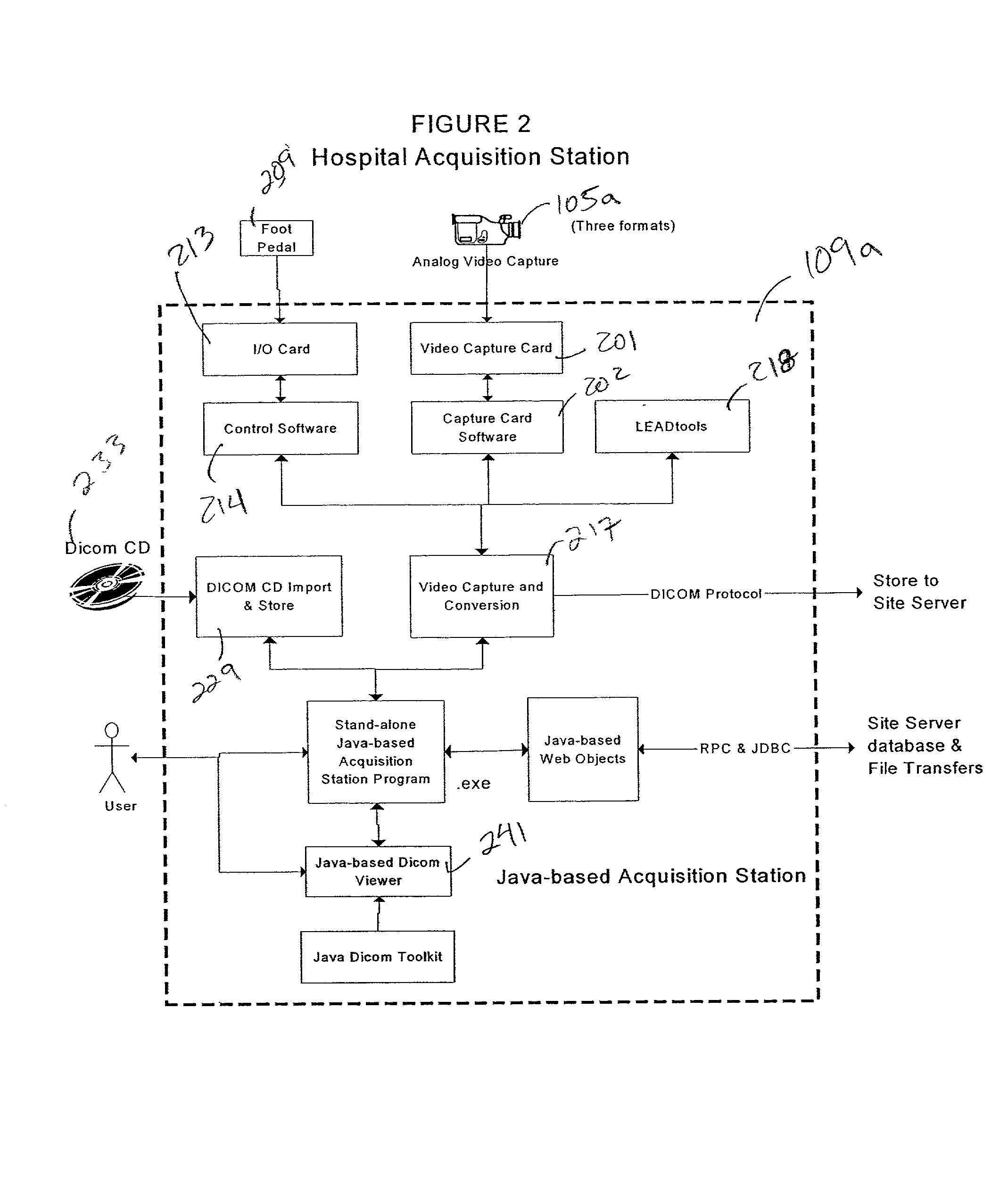Traditional methods of archiving patient records involve substantial costs incurred from the
physical media and allocating shelf space to store the same.
Traditional paper and film storage methods require a significant amount of space, oftentimes requiring an entire filing room to store the accumulation of data.
Newer digital methods of storing
patient information require a
system of removable high-capacity storage devices, such as tape drives,
magneto-optical disk drives and recordable compact disks, which require a significant amount of cost and time to file and retrieve.
The time required to file and retrieve
physical media in a storage facility is cumbersome, as a filing clerk is required to understand the filing structure, find the correct digitally recorded media, and then deliver the media to the diagnostician requesting the
record.
Archiving and retrieving of such films are expensive and cumbersome.
First of all, there is a significant cost associated with the chemicals required to develop the film.
The chemicals must be replaced frequently, or there is a risk of compromising the quality of the medical image.
This results in a higher cost for facilities with
low volume.
Secondly, this requires the creation and maintenance of a storage facility at optimum atmospheric conditions to preserve the film.
Thirdly, the space required to store large numbers of film canisters takes up a significant amount of space.
Finally, the process of reviewing a linear film to find a particular physiological event is
time consuming.
A serious
disadvantage of this method, like the cine' film, is the tedious searching along the linear videotape to find a specific physiological event a diagnostician wishes to view.
These are expensive and are not typically available in each of the many locations in a building where a physician may wish to review the image data.
In a situation where the physician needs to consult the images before treating the patient, it is always possible he or she will be interrupted on the way back to the patient, thus affecting his or her retention of the image.
Still another
disadvantage is the fact that any relevant patient demographic information is only available visually and does not allow electronic databasing for quick retrieval.
Thus, videotape is not an
ideal solution to storage and retrieval of medical video images.
However, there are still considerable drawbacks in current digital archiving systems.
An inherent problem associated with
digital storage of medical video data is the
file size that can be many megabytes per procedure.
Files of these sizes can require a large amount of bandwidth, storage space, and memory.
Unfortunately, the inherent sacrifice with compression is that as compression ratios are increased,
image quality is decreased.
While some of the prior art systems allow for
video storage, many of these systems require the doctor to have access to, or a copy of, the removable storage media.
This is inefficient because without additional copies, only one physician can view the video data at a time, and viewing the data from a remote location requires video data media to be mailed or transmitted electronically such as through e-mail.
This is a
time consuming process that requires a large amount of storage space due to the large image file sizes.
Moreover, either method of delivering video data to a remote location is critically deficient when a doctor must immediately diagnose a patient condition and does not possess the storage media or have the data saved locally on a computer.
Unfortunately, it is tedious and costly to make copies of
digital video media and mail them to the various organizations requiring the patient video data.
 Login to View More
Login to View More  Login to View More
Login to View More 


